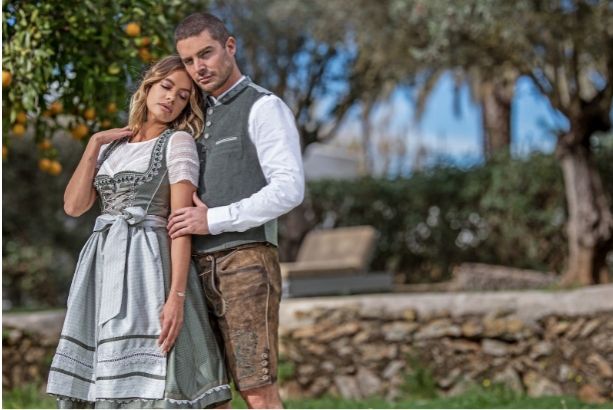
Traditional Bavarian Clothing: Embracing the Rich Heritage
Traditional Bavarian clothing is an integral part of the cultural identity of Bavaria, Germany. The attire reflects the region’s rich history, customs, and traditions. When people think of Bavaria, images of men in Lederhosen and women in Dirndls often come to mind. In this article, we will explore the fascinating world of traditional Bavarian clothing, its significance, and the timeless charm it brings to festivals like Oktoberfest.
The Evolution of Traditional Bavarian Clothing
Historical Roots
Bavarian clothing has deep historical roots that date back centuries. It was initially worn by farmers, shepherds, and hunters as practical garments suitable for their daily activities. Over time, these garments transformed into symbols of regional pride and identity.
Influence of Royalty
The clothing styles also bear the influence of Bavaria’s royalty. The nobility and upper classes of Bavaria embraced the traditional attire, further popularizing it among the masses. The clothing became more refined and adorned with decorative elements, reflecting the opulence of the time.
Lederhosen: The Traditional Bavarian Attire for Men
Lederhosen, the iconic leather breeches, are a symbol of Bavarian tradition and are often associated with Oktoberfest and Bavarian culture. These traditional garments have been embraced by men for centuries, representing their connection to heritage and their appreciation for rustic charm. In this article, we will explore the world of Lederhosen for men, delving into their history, design features, styling options, and the enduring appeal they bring to festive occasions and cultural events.
The History of Men’s Lederhosen
Origins and Practicality
Lederhosen have their roots in the working-class attire of Bavaria. They were originally worn by farmers, laborers, and hunters due to the practicality and durability of leather for outdoor work. Over time, Lederhosen became ingrained in Bavarian culture, evolving into a symbol of regional pride and a celebration of tradition.
Royalty and Popularity
During the 19th century, Lederhosen gained popularity among the Bavarian nobility, including the royal family. This elevated the status of Lederhosen and contributed to their widespread acceptance and adoption among the broader population. Today, Lederhosen are not only reserved for special occasions but are also worn as a way to express Bavarian pride in everyday life.
Design and Features
Materials and Construction
Lederhosen are crafted from high-quality leather, known for its durability and ability to withstand rugged outdoor activities. The leather is often sourced from animals such as deer or goat, providing a soft and supple texture. The construction of Lederhosen involves precise stitching, reinforcing seams, and securing buttons or hooks to ensure longevity.
Classic Bavarian Elements
The traditional design of men’s Lederhosen incorporates several key elements that enhance their masculine appeal. These include:
- Breeches: Lederhosen feature knee-length breeches, allowing for ease of movement while maintaining a rugged and authentic look.
- Suspenders: Suspenders, or “Hosenträger,” are an integral part of Lederhosen. They not only provide practical support but also contribute to the distinctive aesthetic, adding a touch of charm and functionality.
- Decorative Embroidery: Many Lederhosen feature intricate embroidery along the front bib or on the side panels, showcasing traditional motifs such as edelweiss flowers, Alpine scenery, or regional symbols. This embroidery adds a decorative element while paying homage to the rich cultural heritage.
Styling Options
Shirt Selection
Choosing the right shirt to complement Lederhosen is essential in creating a cohesive and stylish look. Traditional options include checkered or plaid shirts, often in earthy tones such as green, red, or blue. These shirts provide a rustic and masculine vibe, perfectly complementing the rugged appeal of the Lederhosen. However, for a modern twist, solid-colored shirts or collared shirts with subtle patterns can be worn to add a contemporary touch.
Footwear and Accessories
Selecting suitable footwear and accessories is crucial to complete the Lederhosen ensemble. Traditional footwear options include sturdy boots, often made of suede or leather, providing a rugged yet refined appearance. Woolen socks are worn to provide warmth and comfort. Additionally, a traditional Bavarian hat, such as a feathered Tyrolean hat or a Bavarian fedora, can be worn to add a distinctive flair. Accessories like belts, pocket watches, and other traditional Bavarian accents can be incorporated to enhance the overall look and showcase personal style.
Embracing Tradition with Confidence
Wearing Lederhosen allows men to embrace Bavarian tradition with confidence and showcase their appreciation for heritage and craftsmanship. Whether attending Oktoberfest, local Bavarian festivals, or themed events, Lederhosen provide a distinctive and masculine style that sets men apart and adds a touch of rugged charm to any occasion. The combination of traditional elements and personal flair allows men to connect with their cultural roots and celebrate the traditions that have been passed down for generations.
Lederhosen for Women: Embracing Bavarian Tradition with Style

Lederhosen, the traditional leather breeches, are often associated with Bavarian culture and Oktoberfest. While traditionally worn by men, Lederhosen have also become increasingly popular among women who want to embrace Bavarian tradition with style. In this article, we will explore the world of Lederhosen for women, discussing their history, design, styling options, and the unique charm they bring to festivals and cultural events.
The Evolution of Women’s Lederhosen
Breaking Gender Norms
Historically, Lederhosen were primarily worn by men for practical purposes, such as working in the fields and engaging in outdoor activities. However, as societal norms evolved, women began to break gender barriers, adopting elements of men’s fashion, including Lederhosen. This adaptation allowed women to participate in Bavarian traditions and festivities on equal footing with men.
Feminine Touches
Women’s Lederhosen have undergone modifications to accommodate the female form while retaining the essence of the traditional garment. Modern designs feature a more tailored fit, accentuating the waistline and adding feminine touches such as decorative embroidery, colorful trims, and playful details.
Design and Features
Shorter Length
Women’s Lederhosen are often shorter in length compared to men’s. They typically reach mid-thigh or just above the knee, allowing for a more feminine and contemporary look. The shorter length provides freedom of movement and a touch of modernity to the traditional garment.
Tailored Fit
Women’s Lederhosen are designed to flatter the female silhouette. They feature a more tailored fit around the hips and waist, enhancing the feminine curves. This tailored approach creates a stylish and sophisticated appearance while maintaining the rustic charm of the traditional attire.
Embroidery and Accents
Embellishments play a significant role in women’s Lederhosen. Intricate embroidery, colorful stitching, and decorative buttons add a touch of elegance and femininity. These embellishments are often inspired by traditional motifs, floral patterns, or regional symbols, showcasing the rich cultural heritage of Bavaria.
Styling Options
Blouse Selection
Pairing Lederhosen with the right blouse is essential to create a balanced and harmonious look. Traditional options include white, ruffled blouses with puffed sleeves. These blouses complement the rustic charm of the Lederhosen and provide a classic Bavarian aesthetic. However, modern interpretations allow for more diverse blouse choices, including fitted shirts, off-the-shoulder tops, or even crop tops, allowing women to express their personal style while staying true to the essence of the ensemble.
Footwear and Accessories
Choosing the right footwear and accessories can elevate the overall Lederhosen look. Traditional options include ankle boots or Mary Jane-style shoes, often paired with white stockings or knee-high socks. For a more contemporary twist, women can opt for stylish flats, sandals, or even sneakers to add a touch of individuality and comfort. Accessories like hats, belts, and jewelry can also be incorporated to personalize the outfit and showcase personal style.
Embracing Tradition with Confidence
Women’s Lederhosen empower individuals to embrace Bavarian tradition with confidence and style. By wearing these traditional garments, women can participate fully in cultural celebrations and festivals while making a statement of their own. Whether attending Oktoberfest, local Bavarian events, or themed parties, Lederhosen allow women to showcase their love for Bavarian culture and their heritage.
Dirndl: The Classic Bavarian Dress for Women
History and Design
Dirndl is the quintessential Bavarian dress for women, characterized by its elegant design and flattering silhouette. It consists of a bodice, blouse, full skirt, and an apron. Dirndls are available in various colors, patterns, and fabric options, allowing women to express their personal style while adhering to tradition.
Types of Dirndls
- Classic Dirndl: Classic Dirndls are knee-length dresses with a fitted bodice, puffed sleeves, and a full skirt. They exude a timeless charm and are suitable for various occasions.
- Modern Dirndl: Modern Dirndls offer contemporary twists to the traditional design. They may feature shorter hemlines, different necklines, or unique patterns, catering to those who seek a more fashion-forward look.
Accessorizing the Dirndl
To complete the Dirndl ensemble, women often accessorize with a lace-trimmed blouse, a decorative apron, stockings or socks, and comfortable shoes like Mary Janes or ballet flats. Additionally, accessories like jewelry, floral headpieces, and shawls add a touch of individuality and enhance the overall look.
The Significance of Traditional Bavarian Clothing
Traditional Bavarian clothing holds significant cultural and historical importance in Bavaria. It serves as a representation of the region’s heritage, traditions, and community spirit. Here are some key aspects that highlight the significance of Bavarian attire:
Cultural Identity
Traditional Bavarian clothing plays a crucial role in preserving and celebrating the cultural identity of Bavaria. It is a source of pride for the locals and serves as a visual symbol of their roots and values. By wearing traditional attire, Bavarians express their love for their region and maintain a strong connection to their cultural heritage.
Sense of Belonging
Donning traditional Bavarian clothing fosters a sense of belonging and camaraderie among the community. Whether it’s at festive events like Oktoberfest or local celebrations, seeing people dressed in Lederhosen and Dirndls creates a feeling of unity and solidarity. It brings people together, encouraging a shared appreciation for tradition and fostering a sense of community spirit.
Celebration of Craftsmanship
Traditional Bavarian clothing is a testament to the craftsmanship and skill of local artisans. The intricate embroidery, quality leatherwork, and attention to detail showcase the expertise passed down through generations. By wearing and supporting these traditional garments, individuals contribute to the preservation of traditional craftsmanship and support local artisans.
Expression of Tradition
Bavarian clothing allows individuals to express their adherence to tradition and connect with their roots. It serves as a visual language that communicates a love for Bavarian culture and an appreciation for the customs and rituals that have been upheld for centuries. Traditional attire serves as a bridge between the past and the present, ensuring that the legacy of Bavarian traditions continues to thrive.
Customized Lederhosen for Men and Women, Embracing Bavarian Tradition with Style
The Bayerische Alpen brand stands out as a unique online destination for customizable Lederhosen, catering to both men, women and kids. With their commitment to quality craftsmanship and personalized designs, they bring the essence of Bavarian tradition to life, allowing individuals to embrace the charm of Lederhosen in their own distinctive style.





